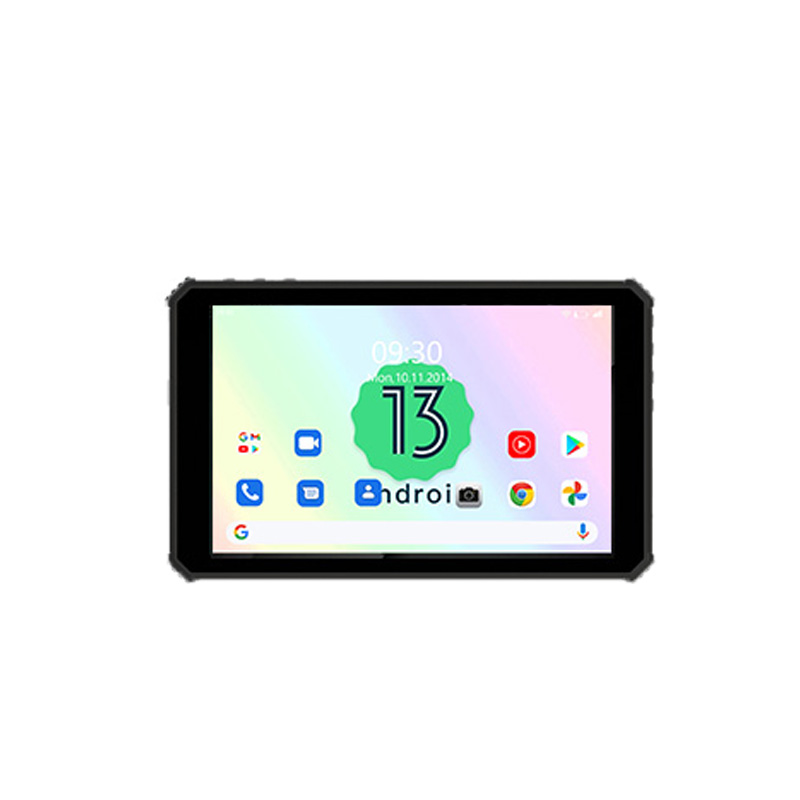TAB85 Pro 5G tablet
Android 13 GMS
Qualcomm® QCM6490 1*A78 2.7GHz+3*A78 2.4GHz+4*A55 1.9GHz
Capacitive,10-Point Touchscreen, Glove/Wet Finger Supported
8GB +128GB
u-blox M8/ ext. GPS antenna connector
8″ IPS HD 800*1200 700 Nits
5G-NR: N2 / N5 / N12 / N25 / N30 / N38 / N41 / N48 / N66 / N71 / N77 / N78
In the United States, the deployment of 5G-NR bands varies depending on the carrier and their specific strategies for balancing coverage, capacity, and speed. Here’s an overview of these bands and their typical usage in the U.S.:
1. Low-Band Frequencies (<1 GHz)
Low-band 5G in the U.S. provides wide coverage and excellent indoor penetration, making it ideal for rural areas and IoT applications.
♦︎ N5 (850 MHz)
Carrier: AT&T, Verizon
Use Case: Expands rural 5G coverage and provides fallback for mid-band areas.
♦︎ N12 (700 MHz)
Carrier: T-Mobile
Use Case: Known as T-Mobile’s “Extended Range 5G”; used to ensure broad, nationwide coverage.
♦︎ N71 (600 MHz)
Carrier: T-Mobile
Use Case: A cornerstone of T-Mobile’s 5G network; delivers extended coverage, especially in rural areas.
2. Mid-Band Frequencies (1–6 GHz)
Mid-band 5G is crucial for balancing coverage and speed, with higher capacities in urban and suburban areas.
♦︎ N2 (1900 MHz)
Carrier: AT&T, T-Mobile
Use Case: Refarmed from PCS spectrum; supports broad 5G deployment in urban and suburban areas.
♦︎ N25 (1900 MHz)
Carrier: T-Mobile
Use Case: Refarmed from Sprint’s legacy network; boosts 5G coverage and speeds in urban/suburban areas.
♦︎ N30 (2300 MHz)
Carrier: AT&T
Use Case: Used selectively for additional capacity and performance in urban settings.
♦︎ N38 (2600 MHz)
Carrier: T-Mobile
Use Case: Utilized in former Sprint markets for increased capacity in dense urban areas.
♦︎ N41 (2500 MHz)
Carrier: T-Mobile
Use Case: A critical mid-band frequency, especially after T-Mobile acquired Sprint. Provides high-speed 5G in urban/suburban areas.
♦︎ N48 (3600 MHz, CBRS)
Carrier: Verizon, AT&T
Use Case: Used for localized, high-capacity 5G deployments, such as private networks and small cells.
♦︎ N66 (AWS-3, 1700/2100 MHz)
Carrier: Verizon, AT&T, T-Mobile
Use Case: Provides additional capacity and coverage in urban/suburban markets.
3. C-Band and Upper Mid-Band Frequencies (3.3–4.2 GHz)
♦︎ N77 (3300–4200 MHz)
Carrier: Verizon, AT&T, T-Mobile
Use Case: Known as C-band, this is a primary band for delivering high-speed 5G with good coverage. It’s a major focus for U.S. 5G expansion.
♦︎ N78 (3300–3800 MHz)
Carrier: Verizon, AT&T, T-Mobile
Use Case: A subset of the C-band spectrum; provides fast speeds and high capacity in urban and suburban deployments.
Summary
T-Mobile: Leverages N12, N25, N41, N71, and N77/N78 to offer both nationwide coverage and urban capacity.
AT&T: Focuses on N5, N30, N48, N77/N78 for balanced coverage and speed.
Verizon: Uses N5, N48, N77/N78 to provide ultra-fast speeds in urban and suburban areas.
Band Utilization by Carrier
| Band | Frequency Range (MHz) | Carrier | Use Case |
|---|---|---|---|
| N2 | 1850–1990 | AT&T, T-Mobile | General 5G coverage; refarmed from LTE. |
| N5 | 824–894 | AT&T, Verizon | Rural and suburban coverage. |
| N12 | 699–746 | T-Mobile | Extended range 5G for rural and indoor areas. |
| N25 | 1930–1995 | T-Mobile | Boosts mid-band coverage; Sprint legacy spectrum. |
| N30 | 2305–2360 | AT&T | Enhances capacity in urban areas. |
| N38 | 2570–2620 | T-Mobile | Urban capacity from Sprint’s legacy spectrum. |
| N41 | 2496–2690 | T-Mobile | Key mid-band spectrum for urban and suburban 5G. |
| N48 | 3550–3700 | Verizon, AT&T | CBRS, localized high-capacity networks. |
| N66 | 1710–2200 | Verizon, AT&T, T-Mobile | Balances coverage and capacity. |
| N71 | 617–698 | T-Mobile | Nationwide rural coverage. |
| N77 | 3300–4200 | Verizon, AT&T, T-Mobile | C-band, a primary 5G band for capacity and speed. |
| N78 | 3300–3800 | Verizon, AT&T, T-Mobile | Subset of C-band for urban and suburban 5G. |
| Band | Frequency Range (MHz) | Type | Duplex Mode | Main Usage |
|---|
| N2 | 1850–1990 | Mid-Band | FDD | Urban/suburban coverage |
| N5 | 824–894 | Low-Band | FDD | Rural and wide-area coverage |
| N12 | 699–746 | Low-Band | FDD | Long-range and IoT |
| N25 | 1930–1995 | Mid-Band | FDD | North American expansion band |
| N30 | 2305–2360 | Mid-Band | FDD | Localized high-speed coverage |
| N38 | 2570–2620 | Mid-Band | TDD | Urban capacity improvements |
| N41 | 2496–2690 | Mid-Band | TDD | High-capacity urban/suburban |
| N48 | 3550–3700 | Mid-Band | TDD | CBRS/private networks (localized) |
| N66 | 1710–2200 | Mid-Band | FDD | Urban and suburban usage |
| N71 | 617–698 | Low-Band | FDD | Rural/indoor penetration |
| N77 | 3300–4200 | Mid-Band | TDD | Global C-band for speed/balance |
| N78 | 3300–3800 | Mid-Band | TDD | Subset of C-band, global usage |






